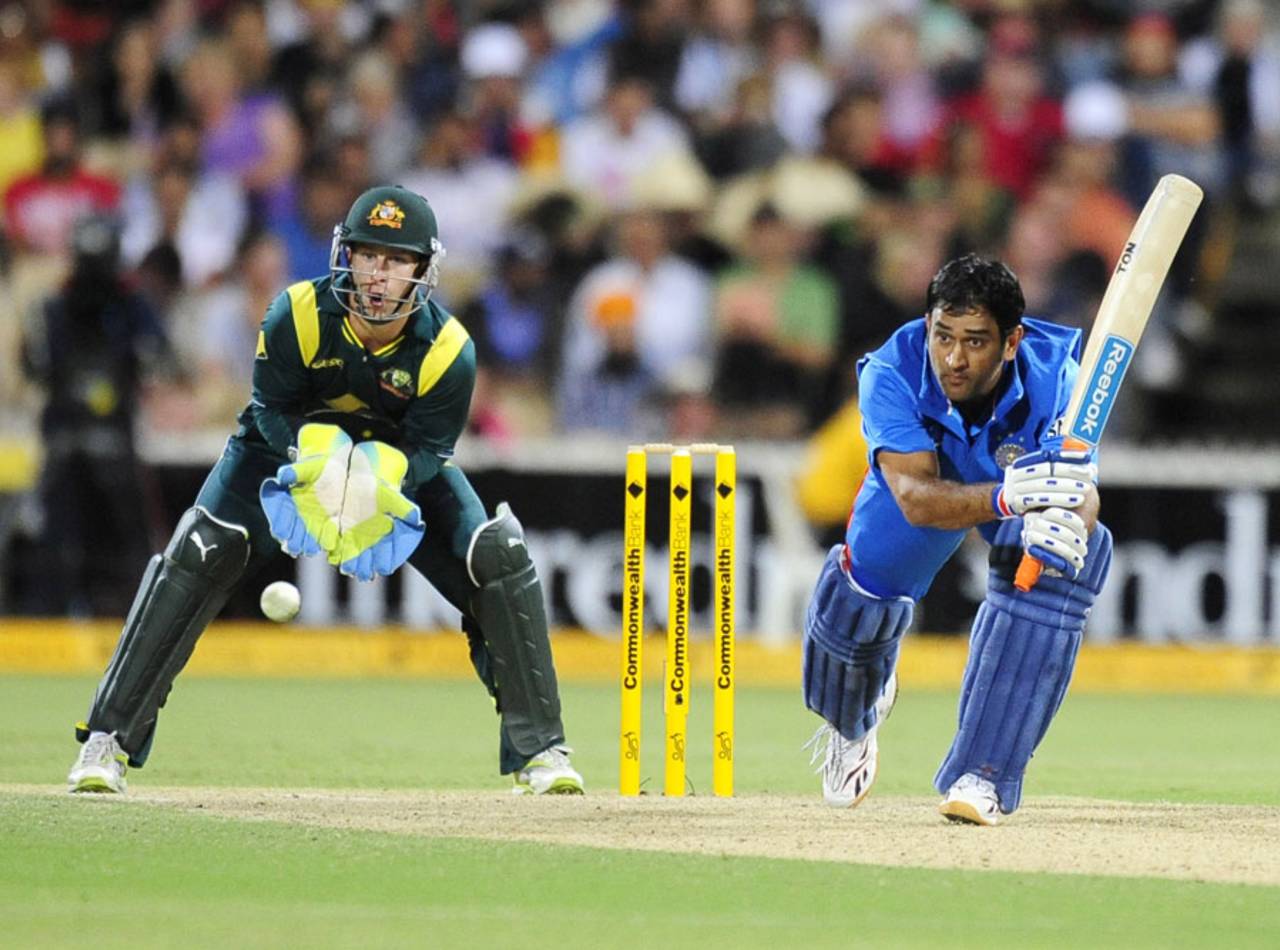There is this honest moment during the extended version of Live at Pompeii - the concert film during whose interviews Pink Floyd basically bully the interviewer most of the time - when Nick Mason goes, "We mark a sort of era. We're in danger of becoming a relic of the past. And for some people we represent their childhood: 1967, Underground London, the free concert in Hyde Park…" You can imagine, at some point during the 2000s, when life and sport moved on to T20 and other things, the ODI triangular - or World Series Cricket as it was called in Australia - said: "I am becoming a relic of the past. For some I represent their childhoods of the '90s and '80s: best-of-three - sometimes five - finals, catches taken behind the sightscreen, the best jerseys…"
The triangular series in Australia for years broke the rules, or convention at least. They dressed Pakistan in blue. They used to play ODIs between Tests at times. In 1991-92, India played a Test, then came five triangular matches, then two Tests, then the rest of the triangular, and then two more Tests. All the while West Indies remained in Australia. Hrishikesh Kanitkar once leaned against the fence and pulled the ball out of the crowd to take what then constituted a legal catch. For two years they had best-of-five finals. In 1980-81 they had teams playing each other five times before playing best-of-five finals. No wonder Greg Chappell asked for an underarm delivery.
The triangular series in Australia was all the more awesome in the '80s: West Indies used to show up every other year. They went there seven times for ODIs tournaments in the '80s. A cigarette company used to sponsor the triangular, and fans could be seen smoking in the open.
There was a certain brashness, audacity, to the triangular. One year they put together a group of players who couldn't make it to the Australia 1st XI and introduced them as the fourth team because Zimbabwe were not expected to draw crowds. Guess who made it to the final? Australia and Australia A. The finals back then were not even ODIs but List A games - which Australia said and proved were more competitive and financially attractive than ODIs.
The coverage of the triangular series was innovative. From the khhraaasssh sound the amped-up stump mics broadcast when someone got bowled to the initial stages of day-night cricket with white balls, to those weather walls that Tony Greig used to carry to the pitch report, to Dawdles the Duck, who accompanied batsmen who failed to score on their walk back. Even the peddling of the overpriced memorabilia seemed bearable. I was a kid. For a long time I didn't realise the Bush in "Bush Great Catches" was Bush TV. Or that Benson & Hedges was a cigarette brand.
The cricket wasn't without innovation either - remember
Adam Dale, who used to bowl nine or 10 overs at one go at the top of the innings? The critics of the Australian triangular, though, will say it was all too gimmicky, like a band relying too much on the instruments. To which the triangular's response always was, like Roger Waters' in
Live at Pompeii to the contention that they relied too much on instruments: "It's like, you give a man a Les Paul guitar and he becomes Eric Clapton, and of course that's not true. And if you give a man an amplifier and a synthesiser, he doesn't become, you know, whoever; he doesn't become us."
And so we kept waking up early - in India's case - to see what the new innovation was going to be this season, what new jerseys the triangular would come up with, and we enjoyed the cricket.
Asif Mujtaba tying a match where 17 were required in one over,
Sachin Tendulkar tying one with the ball where India defended 126,
Michael Bevan's last-ball four off
Roger Harper,
Dion Nash's aerial hit landing on the overlapping rope and New Zealand losing by one run.
Slowly cricket outgrew the Australian triangular. For a long time, the non-Australia matches remained a problem for the broadcasters. T20 came in. Demands made of the players became more specialised. There is an increasingly disturbing notion now in Australia - at least among those who make decisions in this regard - that the public is not interested in anything that doesn't involve Australia. Apart from ABC, few news channels bother with world news. Big news loses out in prominence to the premiere of a Hollywood movie that features an Australian actor. James Brayshaw, for example, a Channel Nine commentator through the Test series, knew nothing about the Indian team. It's apparent the public doesn't like his commentary, but those who are making decisions don't seem to see it.
So even if there might have been some life in the relic, the triangular era was duly ended. Except once in a while, when the broadcasting money from India's visits revived the triangular. India and Sri Lanka played the last triangular here, three years before now, and four years after the previous triangular, which also involved India. Even in 2011-12, Channel Nine was not too keen to telecast the India-Sri Lanka matches. Some of them were shown on Gem, a free-to-air channel.
For one last time, perhaps - since there is unconfirmed news that India will next travel Australia for a seven-ODI bilateral - the triangular has come back, featuring Australia, England and India. There is no best-of-three final, though. And the teams face each other only twice each. And it is just a warm-up to the World Cup. More Endless River than the Floyd reunion for Live 8 at Hyde Park.
Sidharth Monga is an assistant editor at ESPNcricinfo
